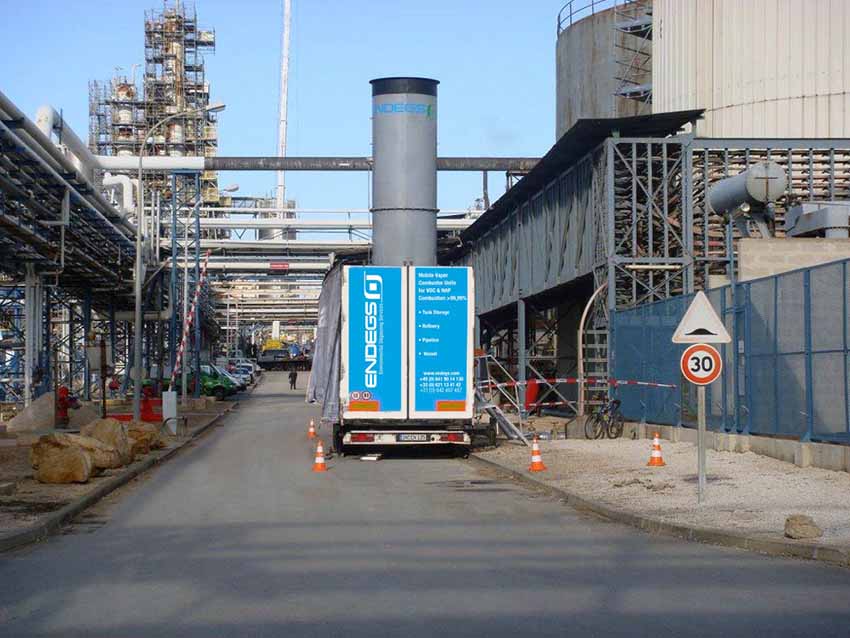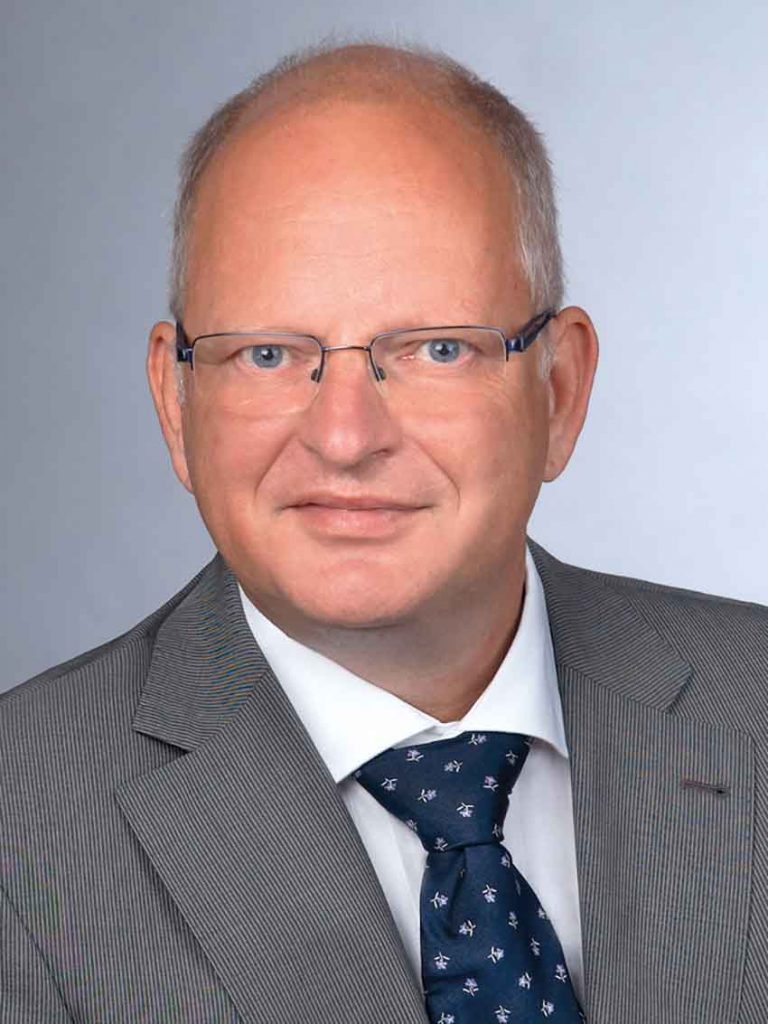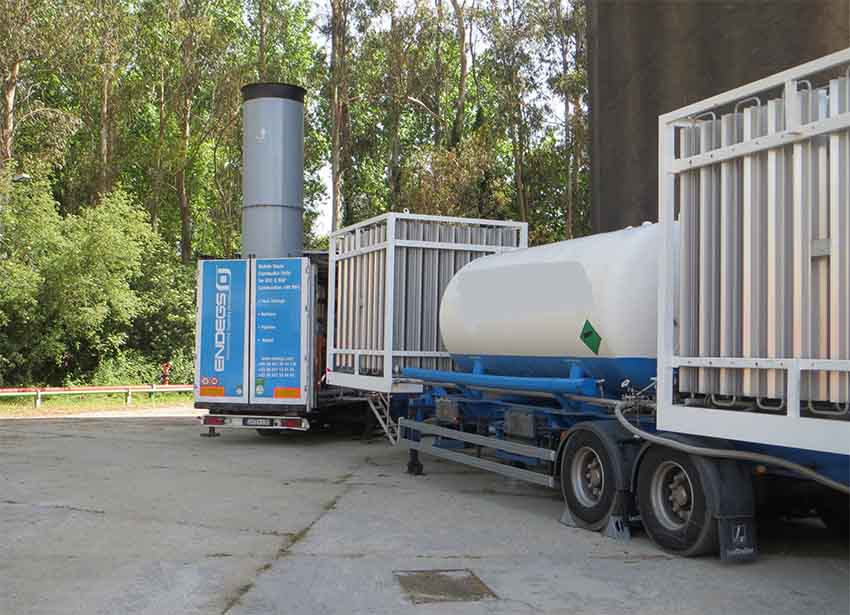ENDEGS offers services for industrial degassing and emissions reduction. Their mission is to avoid that hazardous emissions get into the air during maintenance of tanks, pipelines or vapor recovery units (VRU) or during loading applications. The company has developed leading technologies for safe, clean and sustainable emissions control – for example the world’s first fully equipped, autonomously operated, trailer-mounted vapor combustion unit (VCU) that made mobile degassing possible for the first time ever. ENDEGS is expert for mobile emissions treatment of volatile organic compounds (VOC) and the reduction of the greenhouse gas (GHG) footprint. They accompany their clients through the entire degassing process and offer a combustion rate of more than 99,99 %. ENDEGS’ portable VCUs can burn all kinds of gases, gas compounds and vapors of the hazard groups IIA, IIB and IIC with no open flame – that makes us the only company in Europe being able to do so.
Interview with Kai Sievers, CEO ENDEGS Group.
Easy Engineering: How does your company build and maintain trust?
Kai Sievers: As an international expert for environmentally-friendly degassing, ENDEGS has successfully operated more than 1.400 degassing projects – some of them lasting up to three years and involving the degassing of hundreds of sea vessels or liquid gas tankers. We advise our customers throughout the entire process – from the initial consultation to project preparations and the degassing process itself. Our services also include safety precautions and clean-up, and we also help with necessary permits from local authorities. We operate in accord with applicable European safety regulations – for a high level of occupational safety, health protection and quality assurance, we are certified after ISO 45001 and ISO 9001. This way, we ensure the protection of everyone involved in our environmentally friendly emissions control services. Our mobile combustion units are specifically certified for environmental degassing and meet the highest quality requirements. As a family-owned company with long and dependable relationships with our customers, we ensure continuity and transparent processes.
E.E: Tell us about some of the most successful project/projects from around the world.
K.S: We carry out projects all over Europe and have recently expanded to the seven Gulf Cooperation Council countries. Our mobile VCUs can be used for individual incineration processes, short-term as well as long-term. We degas VOC and HAP emissions of all types of tanks, containers and pipelines so that they can be loaded or unloaded and help companies to prepare for downtime and maintenance. ENDEGS also offers the environmentally friendly degassing of tankers and barges. Furthermore, our units are suited as a temporary solution and as replacement for vapor recovery systems, flares and vapor processing systems.

A special project that was different from everything we did previously was the first time we degassed an ammonia tank for maintenance and repair. The client’s operations were quite different and not really environmentally-friendly before we started our work. The product was stored at minus 33°C, so the vapors needed to be warmed up and the entire procedure was to be reconsidered. We finally made it and the client invested money for really good measurements that were very well accepted by authorities.
The other case in mind was a project to degas a butadiene storage tank. This kind of product tends for polymerization – if you burn it normally, black “snow” develops and burners will be jammed. We modified our system and the result was perfect: no soot or black “snow” and a perfect combustion.
E.E: What ranges of products/solutions were used in the project/projects?
K.S: The products that are used in most of our projects are our mobile vapor combustions units, our fleet of vaporizers with nitrogen tanks and the ATEX Zone 0 robot for tank cleaning that we rent. Our units are scalable as needed from 0.1 to 50 MW in their combustion capacity and have an extremely short installation time and efficient performance. Our service portfolio covers an all-in service package including personnel and additional equipment as well as the rental service of individual elements. Besides the VCUs, our vaporizers and the robot for tank cleaning, customers can also rent equipment such as power generators, supporting gas supply, connecting pipes and much more.

E.E: How were these products/solutions used to optimize the client’s business?
K.S: Our technologies and services are aimed to reduce hazardous gases and vapors that are dangerous to people and environment. During the operation of our units, downtimes of the facility are reduced to a necessary minimum and daily operations can continue undisturbed or with only minimal interference. This saves customers time and money as the business can keep going almost as usual during the entire process. When our VCUs are used to replace a stationary vapor recovery unit, this becomes very important: VRUs and vapor treatment systems are used to treat and remove vapors and pollutants in refineries and tank farms. They have to be inspected regularly to ensure their functionality – a process meaning downtime for the VRU. As facilities without a VRU are not allowed to operate, our mobile combustion units can be used to treat vapors in its stead during malfunction or maintenance. This way, there are no interruptions of operations and business for our customers.
E.E: What innovative features do the products/solutions have?
K.S: ENDEGS has been named Top 100 Innovator in 2021 and 2022. The award recognizes the 100 most innovative medium-sized companies in Germany. We are always looking for new innovations and improve our technologies and solutions continuously. For example, we have recently increased our portfolio of mobile vapor combustion units: additionally to the VCUs with combustion power of 5, 10 and 20 MW, we can now also offer 3 MW units for short-term projects, emergencies and accidents. Directly after arrival and permission, we can start to treat emissions environmentally friendly. Our new fleet of vaporizers with nitrogen tanks is suited to purge and render insert systems and system components that handle flaming liquids and gases. The technology can be applied to maintain pipelines, tanks, barges and bulk containers as well as during turnarounds. The mobile nitrogen vaporizer is ideally suited for the use in emergencies and during downtimes. The ATEX Zone 0 robot allows the remote-controlled tank cleaning with no risks for the health of the workers. Due to the new technology, workers are no longer exposed to the gases and vapors in the dangerous ATEX zone 0 – previously, risks were high despite wearing protective gear.

E.E: What were the challenges that you encountered?
K.S: At first, refineries and tank farms said to us: “It’s prohibited to smoke and you will put such a blunt in my tank farm?” Today, however, there is no discussion about that anymore: we are now ordered to increase safety. Additionally, the features of our units are performed intrinsically safe, checked and certified.
What we also hear often is “… but you produce CO2!” There is no way to “compare” toxics with CO2; let’s take methane as an example for a better understanding. The oil and gas industry is one of the largest methane sources. Methane has more than 80 times the warming power of carbon dioxide over the first 20 years after it reaches the atmosphere. Even though CO2 has a longer-lasting effect, methane sets the pace for warming in the near term. Atmospheric concentration of methane is increasing faster now than at any time since the 1980s – which means that now is the methane moment: acting now to reduce methane emissions will have immediate benefits to the climate that reductions in carbon dioxide cannot provide on their own. Alternative technologies shift this problem to the waste circle first and add some storage and logistic losses to finally combust it as well under creation of CO2.
E.E: How did you overcome the challenges?
K.S: We are refocusing the debate with our interlocutors who of course easily understand that CO2 is inevitable but that we can reduce through degassing the VOCs which are often toxic by more than 99.99 %.

E.E: What are your estimations for the rest of the year?
K.S: Those in charge know that action must be taken to reduce VOC & HAP emissions. Acting now will have immediate benefits to the environment and safety. With the biggest, diversified and powerful fleet of degassing units in Europe, we expect a very positive development of the degassing market for 2022.
